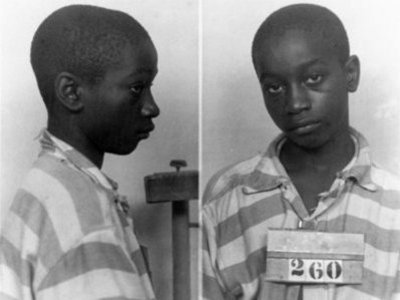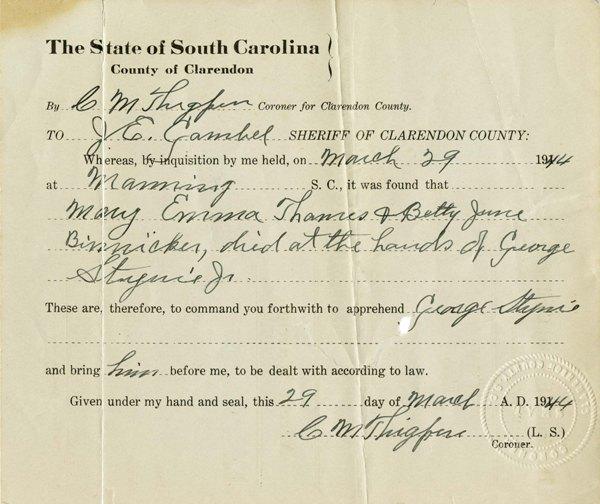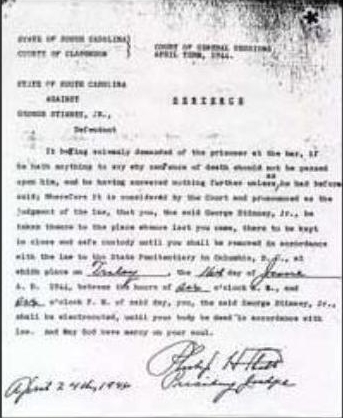Leblanc: That’s what happens when you ride in the rain.
Leblanc: JK
CLF: Car accident on Powell
CLF: Traffic & buses are dicked.
July, 4th, 2014
Visionary, Cabela's customer,skateboarder, rigpig; Benjamin Arthur Holzer Greengrove can rest his hat upon many titles, but, the title which suits him the most, brud, truly sums up the man's character. We sat down with Ben for a short interview to find out what goes on in the mind of a Greengrove and re-edited some of his classic footage for our CLF viewers.
Ben: Dude, you drop a new radio?
CLF: Yeah
Ben: what's the link?
CLF: It's in the rss feed. /clfradiotwo.mp3
Ben: Haha, wow.
CLF: Happy Birthday pumpkin, fuck I just got high
and skinned a dead bird for 45 minutes.
Ben: That's dirty haha, let me know if you need
anymore info on that product or sizes or anything.
CLF: That's probably cool, I'll do them tomorrow morning.
Who should I send credits to?
Ben: I dunno. Adam $%^&@#%.
Ben: Dude, so much archery last weekeend learned so much
and missed a fat grouse by like an inch.
CLF: Siiiiiiiiiick.
Ben: Haha, holler a couple units my way next week.
The statements of Greengrove.Source: youtubes.com
CLF: What size? 7.62? 8.38? 8? 7 13/16?
Ben: Like 8 or 8 1/8 girl unit. Probably need two.
CLF: G23?
Ben: Whatever the Koston is, setting up a wall board for today.
You got big gay Al's number?
CLF: No, he's up in Nelson on a trip with AJ, Coco, and Cam.
Ben: Haha, is he tom yet or what? TM. Ohh yah.
CLF: What address?
Ben: Frig, don't worry bout it for no I gotta go up north
to the middle of [expletive deleted] knowers tomorrow.
CLF: How's Berta bro?
Ben: Pretty Dicked, start a new job in Grand Prairie tomorrow.
Drilling holes and building roads for fuckin frackers.
CLF: Sick, Dark Flavour country. You gonna need boards in GP?
Ben: Hah defiantly not, I work 12 hour days 21 in a row.
No time for anything but eating, [expletive deleted], sleeping, and working.
Ben Greengrove exhibits a wallride outside of the local Price Smart.Photo:Louis Feller
:
CLF: Man's work. You should slang DVS shoes to your coworkers.
Ben: Haha, yeah if they made 8" CSS approved steel toes.
It's pretty nuts they pay for me to stay in a hotel every
night and give me 50 bucks daily ($1100) for food for the 3 weeks im working.
CLF: CSS? Cascading style sheets?
Ben: CSA hah. Canadian safety approved. Everybody rocks RDS it's ridiculous.
CLF: Too berta brud?
Ben: I'm coming to Van tomorrow morn.
Frig off. Oh yeah. Believe that. Can't wait for a mauler.
CLF: How is working in the Bert?
Ben: Pretty dicked at first but I'm on a dump truck now so it's chill.
CLF: Like you're standing on a dumptruck or driving one?
Ben: Yeah, standing on one.
CLF: Sick, so relatively close to skateboarding.
Ben: There's a pretty dope park here. Is it next level.
CLF: Are you asking me if the park is next level?
Ben: Ya. I'm sure it is.
CLF: Well then, the park is next level. Are you pleased with your move?
Ben: It's alright. I made 3600 on my last 2 week cheque.
CLF: Any shoutouts?
Ben: I just passed a black bear shout outs to that.
CLF: Friggin rights buds! Interview will be up tonight, any last words?
Ben: Fuck.
June, 25th, 2014
In an attempt to educate, spark discussion, and further our development as a people, CLF is focusing on the very divisive case of George Stinney Jr. Feel free to continue the discussion on the thread in our forum.
The Complex Network that was the Slave Trade.
Photo:Slaverysite.com
A tumultuous history of racial oppression has created an indelible spectre of tension throughout the American deep south. Born from the old fashioned economy that was the slave trade, these oppressive conditions survived through the Civil War and were still greatly afflicting the south in the mid-twentieth century. Judicial injustices for members of the southern black community were commonplace, but, there are not many cases that could rival that of George Junius Stinney Jr's in terms of injustice.
George Jr's story took place in the heart of South Carolina, in a tiny mill town known as Alcolu. Alculo rests just west of Myrtle Beach. The etymological origin of the town's name finds its basis in the mind of D.W. Alderman, owner of the local sawmill. It was said that the name Alcolu was an amalgamation of the names of Alderman, his brother in law Colwell, and his eldest daughter Lula.
George Stinney in 1947
George Jr. was born in this tiny South Carolinian mill town of Alculo, was the son of a millworker, and the oldest of three siblings. One Thursday afternoon, another resident of Alculo, eleven year old Betty June Binnicker, told her family she would return in half an hour. Betty June then took her next door neighbour, Mary Emma Thames, and they both rode off together on their bicycles to pick flowers. As the two girls passed George and his sister Aimey Stinney, a fateful encounter took place that would cost George Junius Jr his life: the girls inquired if George, or his sister Aimey, knew where any Maypops may be located in the area. A Maypop, also known taxonomically as Passiflora incarnata, is a perennial climbing vine native to the South-eastern United States and is, additionally, the State Flower of Tennessee.
Passiflora incarnata. Photo: Greenlandgardener.com
The Stinney children replied that they did not know of anyplace in which the two girls would be able to find Maypops and then continued to graze their cow. Aimey would later recall that it was particularly odd to see white children hanging around that side of Alcolu. That would be the last time anyone would ever see Betty June or Mary Emma alive. That evening, Betty June and Mary Emma did not return home. A search commenced for the missing youths. The town lumber mill even shut its doors to facilitate all of Alcolu being able to participate in the search. The next day the bodies of Betty June and Mary Emma were found.
As with the rest of the small town, the Stinney family took part in the search for the missing youths. During the search, George made the fateful mistake of mentioning that he had seen the two girls on the day of their disappearance. An arrest warrant was issued and George was swiftly apprehended at his parents home and brought to the Alcolu precinct for interrogation.
The warrant for the teenage boy's arrest.
Since these events took place before the existence of Miranda rights, the fourteen year old youth was interrogated behind closed doors by several white officers without parents or a lawyer present. Several hours later the sheriffs emerged from the interrogation room with a confession; no written confession remains, within the public records, and no one knows what actually took place behind those doors.
Stinney's Fingerprints.
A tax lawyer, itching to run for political office, was assigned to George as his public defender. A taxman that many accuse of caring very little about the young life that laid in the palm of his hands; following the trial, Stinney's attorney failed to even file an appeal that could of, at the very least, extended the youths life further than the 81 days he lived following the deaths of the two young girls.
The death sentence handed down to Stinney.
Rumours and hearsay of a possibly coerced confession remain, but nevertheless a swift trial commenced and lasted an astonishingly long 3 hours. In part, the trial owes its short length to the defense not calling any witnesses or presenting any evidence. Stinney was convicted of murder and sentenced to death for bludgeoning Betty June Binnicker (11) and Mary Emma Thames (8) to death with a railway spike. Stinney was denied even the comfort of his family; Stinney's father was fired from his job and his entire family was driven out of their Alcolu home in the middle of the night.
On the evening of June 16th 1944, Stinney was led towards his demise; South Carolina's Old Sparky, which was installed in South Carolina's death chamber in August of 1912, is a popular South Carolina death row endpoint and is still in use today. George Stinney would become the youngest inmate to be put to death by Old Sparky at only 14 and a half years of age. Allegedly, Stinney was too short to fit the contraption forcing him to resort to sitting on top of bibles to reach the necessary electrodes. The first surges of electricity forced the child to fall forward, out of the mask, and expose his grisly contorted features to the audience. Why an audience would gather for the state-sanctioned murder of a child one can only guess.
Letter from Gov. Olin D. Johnston to local Clergy
Many have argued for Stinney's innocence and many have argued for Stinney's guilt in the murders of Betty June Binnicker and Mary Emma Thames, but, his culpability in the matter, still remains fully unanswered. Not only was there no written confession produced, Stinney professed his innocence at the trial. And although the police officers of Alcolu, and even then Governor Olin D. Johnston, alleged Stinney had committed the murders in an attempt to sexually assault one of the girls, recent autopsy reports exhibited no signs of a sexual assault. Conflicting reports exist on whether or not Stinney was actually physically capable of administering the bludgeoning upon the two victims. Proponents of Stinney have mentioned the alleged death bed confession of a local white resident, but have failed to provide any evidence relating to the man or his actual guilt in the matter. And what about the Alcolu police officers who allegedly beat a confession out of the youth? It was said that one of the men, who would later drive Stinney to his final residence, would take a detour on the trip to buy the child a bible and chocolate bar.
So, where does all of this lead us? Some may say there is as much evidence of his guilt as there is of his innocence. It is truly impossible to ever know what happened that fateful day in 1940s Alcolu, South Carolina when two innocent lives were taken. But, on the evening of June 16th 1944, it is clearly evident what occurred: the state-sanctioned death of a child. And for that, our nation should hang its head in shame.
Your browser does not support the audio tag.
Witnesses recall the day in question.
June, 24th, 2014
Few musical artists have attained a state of greatness, in the eyes of their fans and critics, in the same way that Matthew Storm has. The Canadian born singer-songwriter, guitarist, keyboardist, drummer, triangalist, and frontman of Ree, has always been captivated by the many intricacies of music creation. Today, CLF sits down to get inside the mind and soul of Matthew Storm, or, as he is more affectionately known, Matt Sturm.CLF: You jome? Homr?
Matt Sturm: Yes upstairs.
Matt Sturm: Sup im at wrk. I’ll be home around 6
CLF: Well way to step your game down {expletive deleted}
Matt Sturm: Haha yaya u bastid I think Bill’s home if you want to chill.
CLF: What is up Duke Ellington?
Matt Sturm: Just got home.
CLF: Sure…Fuuuuuuuuuuuuuuucked up.
CLF: You at work {expletive deleted}?
Matt Sturm: Nah, I’m home you coming through?
CLF: Yeah Buddy! Nothing but a peanut.
Matt Sturm: Okay, are you here?
CLF: Nah I left.
CLF: Yo word up dawg. Cold chilling? Hey you piece of shit. This isn’t a
socialist Cuban sugar plantation you fuck. RSVP
Matt Sturm: Yo son! I’m baking. U commie {expletive deleted}.
CLF: I heard Ben had a tummy ache today?
Matt Sturm: What a bitch. You still in the hood.
CLF: I await your reply
Matt Sturm: Sorry, I’m golfing. I’m thinking 8 o’clock.
CLF: Hola mi amigo! Si, senor Benjamin presentada la fuego.
CLF: You making a lot of money off of music?
Matt Sturm: Only 50 bucks swag!
CLF: Yolo!
Matt Sturm: Yaup
Your browser does not support the audio tag, fag.
CLF: Stermen Meyer, Yo brah.
Matt Sturm: Yo, what’s up?
CLF: Okay?
Matt Sturm: Yaup
CLF: You at the crib?
Matt Sturm: Yaup, coming through?
CLF: Yaup
Matt Sturm: Come downstairs.
CLF: En route.
CLF: At home?
Matt Sturm: Je suis a la maison
CLF: Tu es la casa?
Matt Sturm: Si Senor. I’m going to the store.
CLF: Who was the killer in the movie?
Matt Sturm: Ya, it was the chick. Good job you must be in post secondary.
CLF: You, you got what I need?
Matt Sturm: Ya! Can you buy me a tool? How much are they? If they are a rip off, just snatch up some allen keys and shit. Swag.
CLF: Royal Keychain tool: $7.50, Spitfire T3 Tool: $7.50, Chocolate flat skate tool: $7.50?
Matt Sturm: The most G one will do. Ben owes me 5 dollars.
Your browser does not support the audio tag, fag.
CLF: Are you setting up a new board?
Matt Sturm: Yeah, a new Dustin Locke hand me down.
CLF: The T3 will suit your needs. What are your thoughts on the state of the music industry?
Matt Sturm: The music industry is the club industry
CLF: What is your favourite club? Car theft preventer, turkey club, chess club, seal club?
Matt Sturm: Baby Seal clubbing looks like a good time. Canadian tradition.
CLF: So, I’ve always known you as a “music guy”. What first sparked your interest in the audible arts?
Matt Sturm: Stumbled upon a Spin Doctors album as a young boy. Pocket full of kryptonite got me off. Are you with Ben?
Tell him to call clay about the house we peeped.
CLF: What house?
Matt Sturm: The one at Brentwood.
CLF: I told him. So which musical instrument would you say you’re most proficient at?
Matt Sturm: I’m an axe man. Tell Ben to get rent and try not to be a {expletive deleted}.
CLF: The axe is a quite formidable musical tool. Did you ever play Golden Axe? Are you a fan of Chuck Berry or BB King?
Matt Sturm: Haha, I actually think I remember that game, sick game! Can’t say I listen to much Chuck Berry, but old BB King is my shit.
CLF: What’s the name of your band? What do you hope to achieve with it?
Matt Sturm: It’s called Ree, who is this?
CLF: Wow, way to end an interview buddy. You sir are out of it.
Matt Sturm: Rap Game Phil Collins.
November, 30th, 2013
A Truly crucial leap in the gradual hominin evolutionary transformation into common Homo
sapiens sapiens was the move from quadripedalism to bipedalism. A complete change would take
place with regards to the locomotion method of some members of the Hominin family. Along with this
switch in hominin locomotor evolution came costs and advantages: changes in anatomy and an increased
tax on the systems of these newly bipedal organisms. The switch from quadrapedalismto bipedalism did
not only manifest changes in hominin morphology, it naturally manifested changes in the evolution of
human behavior. The evolution of hominin culture is directly tied to the moment bipedalism first took
early hominins out of their arboreal habitat and forced them to use the terrestrial style of locomotion
used by current extant hominins. By comparing and contrasting two recent academic journal articles:The
Metabolic Cost of Walking in Humans, Chimpanzees, and Early Hominins and Locomotion and Posture
from the Common Hominoid Ancestor to Fully Modern Hominins, with Special Reference to the Last Common
Panin/Hominin Ancestor, one can attain a significant amount of knowledge regarding the evolution of
terrestrial bipedalism and the costs that this mode of locomotion had on hominin life forms physically,
behaviorally, and culturally. While the two articles differ on distinct issues regarding the evolutionary
processes leading to bipedalism, both clearly detail that the selection of hominin bipedalism may possibly
have been the most significant item in the evolution of hominins both physically and behaviorally.
Initially, the two journal articles have similarities in some areas of their analysis. Both Pontzer et al and
Crompton et al agree that terrestrial bipedalism is a more energy efficient mode of locomotion
(Pontzer et al, 2009; 45) (Crompton et al, 2008; 511). Therefore, it is only natural that human bipedalism
became the selected evolutionary trait. This transformation of locomotion techniques would free up the use
of the fore limbs which could then be used towards aspects other than transportation. This key advantage of
bipedalism significantly affected the behavior and culture of early hominins. This is due to the fact that the
forelimbs could now be used to carry items long distances, create and use tools, transport the young, and
whatever else these early hominins could imagine. Behavior patterns and culture would have to evolve to allow
for the transmission of these new traits to future generations. Pontzer et al and Crompton et al additionally
both agree that the evolutionary move to bipedalism coincided with a gradual move away from an arboreal way
of living and towards a more terrestrial form of habitation(Pontzer, 2009; 44) (Crompton et al, 2008; 510-511).
This move in habitation, from arboreal to terrestrial, would change hominin behavior; the first bipedal hominins
would naturally begin to travel farther distances in search of food sources and develop varied subsistence
strategies which would eventually evolve towards the more nomadic lifestyles of later hominins like Homo
neanderthalensis. Logically, a change to orthograde bipedalism would require changes to the physical anatomy
of early hominini. Pontzer et al and Crompton et al mutually agree that morphological changes would have to
have taken place to provide for bipedalism and notably they both often refer to BHBK or bent hip bent knee a
defining factor in bipedal hominins(Pontzer et al, 2009; 56)(Crompton et al, 2008; 508). Additionally Crompton
et al goes into great detail regarding morphological changes to the femur, metatarsals, pelvis, etc
(Crompton et al, 2008; 507-510,533-535). Data from extant Hominidae is used by both studies to support their
particular theories regarding bipedal evolution, particularly with regards to that of orangutans and chimpanzees
(Pontzer et al, 2009)(Crompton et al, 2008).
The main contrast found between the two articles, regarding bipedal hominin evolution, is the question of what
form of locomotion was the most recent predecessor to common hominin bipedalism. Crompton et al stressed that
current hominin bipedalism was derived from the branch suspended bipedalism of early hominins with locomotion
traits similar to orangutans and chimpanzees of today (Crompton et al, 2008; 509,511). Basically, Crompton asserts
that early hominin’s need to reach the food sources that were located in the tree canopy translated into arboreal
bipedalism which, in turn, translated to terrestrial bipedalism. However, Pontzer et al disagrees with Crompton and
believes the preceding locomotion method to terrestrial bipedalism was in fact quadrapedal knucklewalking like that
of the common great ape the Gorilla. Pontzer cites taxonomic similarities between humans and extant quadrapedal
knucklewalkers along with post cranial similarities to support his team’s hypotheses (Pontzer et al, 2009, 45).
Crompton, on the other hand, states quadrapedal knucklewalking was likely the predecessor to arboreal bipedalism
(Crompton, 2008; 533). His reasoning is that displacement from natural deforestation forced knucklewalkers into the
tree canopy to find additional sources of food which in turn led to flex hip flex knee habits from vertical
climbing(Crompton, 2008;533). These “flex hip flex knee” skeletal differences lead to a body more equipped for
arboreal bipedalism. Although these ideas on bipedal evolution are highly differing, both articles clearly show
the advantages that terrestrial bipedalism had on the cultural and physical evolution of hominins.
Both studies do an exceptional job of detailing the evolution and the costs and advantages that bipedalism had on
the physical and behavioral aspects of hominin evolution. The extensive use of empirical data for support of their
hypotheses does much to strengthen their arguments, but, one may wonder how accurate can it actually be if both
articles use data from extant primates to supplement data for extinct hominin species. Unfortunately, with subjects
such as these the only option is to use the closest living relative to produce the best approximate data regarding
these extinct hominins. Regardless, it is vital to notice that hominin development evolved a highly advantageous form
of locomotion that enabled tool use, carrying of items, and the dispersal of hominin populations, as well as being a
more cost efficient method of transportation. The importance of hominin bipedalism is not in what it evolved from,
but in what it enabled later hominins to evolve into. You little bitch.
References
Crompton, R.H., E.E. Vereecke, and S. K. S. Thorpe. 2008 Locomotion and Posture from the Common Hominoid Ancestor to Fully Modern Hominins, with Special
Reference to the Last Common Panin/Hominin Ancestor. Journal of Anatomy 212(4):501-543.
Pontzer, Herman, David A. Raichlen, and Michael D. Sockol. 2009 The Metabolic Cost of Walking in Humans, Chimpanzees, and Early Hominins. Journal of Human Evolution 56(1):43-54.
September, 12th, 2013
Margaret Atwood is one of Canada's most notable
literary figures. She has been nominated for various literary
awards, which comes as no surprise seeing as Atwood takes to any
narrative with much aplomb. Her skillful wit and her ability to
build dynamic rounded characters is unmatched. Here at Capturing
Lost Footsteps, we applaud Margaret Atwood not only for her
literary prowess, but, more so, for her conservationist and
naturalist tendencies. Atwood weaves the natural
world into her work and creates scenery which rivals the
likes of even Thoreau. Atwood's use of wildlife and the
natural world as representations of her human characters
displays the pulchritude of nature, all while connecting
humanity to its wild roots.
Atwood with another of Capturing Lost Footsteps honoured citizens: David Suzuki
In this instalment of CLF's Articles ,
Margaret Atwood's Wilderness Tips is examined
for its rich bird references. In Wilderness Tips ,
four siblings and a brother in law enjoy a sordid stay at
a rural cabin known as Wacousta Lodge. Atwood, rather
effectively, builds up the five characters using a
third person omniscient point of view and in no time the
reader is entrenched in the personal conflicts of each
individual and the dynamic of the group. Although many
allusions and types of symbolism can be found all
throughout Wilderness Tips , particularly noticeable
are Atwood's bird references.
In Wilderness Tips , Atwood draws a connection between her female characters and three bird
species. There is a definite connection between the three women and the three taxidermy bird
specimens in Wacousta lodge and Atwood makes reference to the three birds early on: "Pamela is
complaining again about the stuffed birds. There are three of them, kept under glass bells
in the living room: a duck, a loon, a grouse." The three bird specimens are representations
of the three female characters. Pamela, the lone shabby intellectual, is the grouse, Prue is the
wild loon, and Portia is represented by the banal duck.
Pamela's slab-like rectilinear shape and her grassy hair mimic the appearance of a wild grouse;
Atwood even describes Pamela in the following way: "Her hair is the color of dried grass". (Atwood, 45)
Later on in the story George's character ponders over Pamela's graceful neck and throat.(Atwood,50).
These traits are consistent with grouse species in Canada, like the sage grouse, and
their graceful neck plumage. Pamela holds her head high and stares off in the distance, much like the behaviour of a proud grouse.
The Loon is representative of Prue, the Loon is often a symbol of nature and the wilderness.
It's likely Atwood chose the loon due to it being a common Canadian icon and the provincial bird of Ontario.
Prue has a "bandana around the neck" consistent with a loon's markings, a black over the shoulder dress consistent with a loon's black back, and wide legged white shorts consistent with a loon's belly. Atwood references the loon later in the story: "She scowls at the glass loon in its glass bell."(Atwood, 50). This is at a point where Pamela is upset with Prue and her inability to follow through with things. Pamela is not just scowling at the loon, Pamela is scowling at Prue who the loon represents. In literature, the loon is also known for its clamour and wild nature. Thoreau commented on this in Walden : "In the fall the loon (Colymbus glacialis) came, as usual, to moult and bathe in the pond, making the woods ring with his wild laughter before I had risen." (http://thoreau.eserver.org/walden12.html) Prue is certainly the wilder of the three characters and the most vocal, so, her character mimics that of a loon not only through
appearance, but, through character as well. One of the most notable quotes that alludes to
the connection between the loon and Prue is found later on: "Prue, who'd dredged him up from
God knows where and was flaunting him around like a prize fish."(Atwood, 51) The fact that
the loon is a diving bird that feeds on fish can not be overlooked in this context.
Finally, the duck is a representation of Portia's character. The duck is commonplace,
unlike the grouse, and quiet compared to the loons howl. Simple, and mild mannered it
appears more adaptable than the other two birds. It's commonplace, temperate behaviour
represents conservatism, tradition, and purity. Portia also embodies all of these traits.
George is simply a vulture.
Wilderness Tips is just another example of Margaret Atwood's proficiency as a writer.
With great subtlety, Atwood arranges references to the natural world that work together to
create a story that bleeds wilderness and is drenched in the wild nature of what we call humanity.
Huzzah! Margaret Atwood. Huzzah!
Return Home
Contact Us By Email For Any of Your Needs





























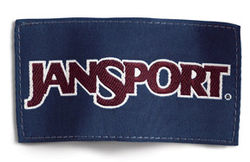

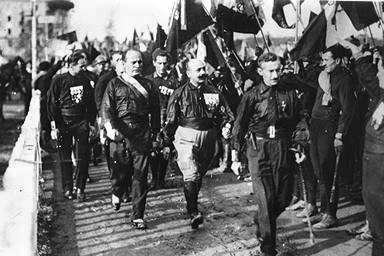

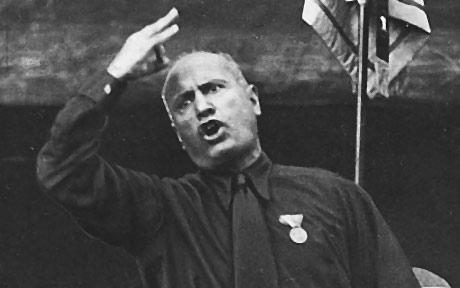


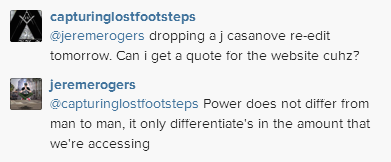





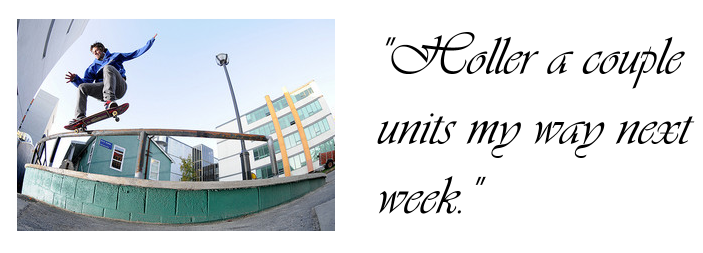

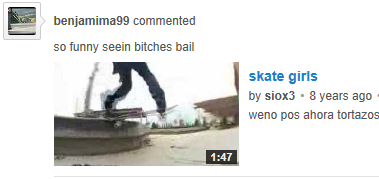
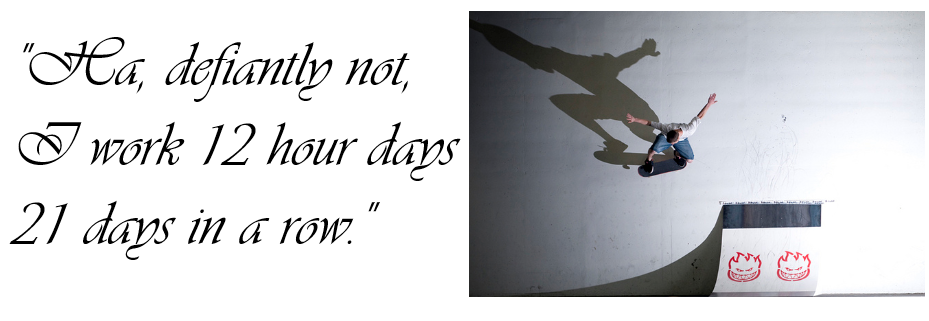
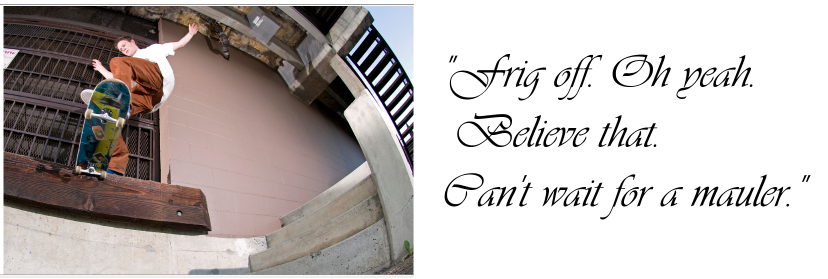


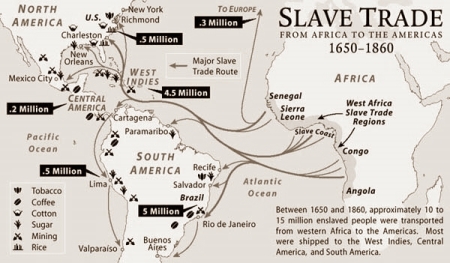 The Complex Network that was the Slave Trade.Photo:Slaverysite.com
The Complex Network that was the Slave Trade.Photo:Slaverysite.com